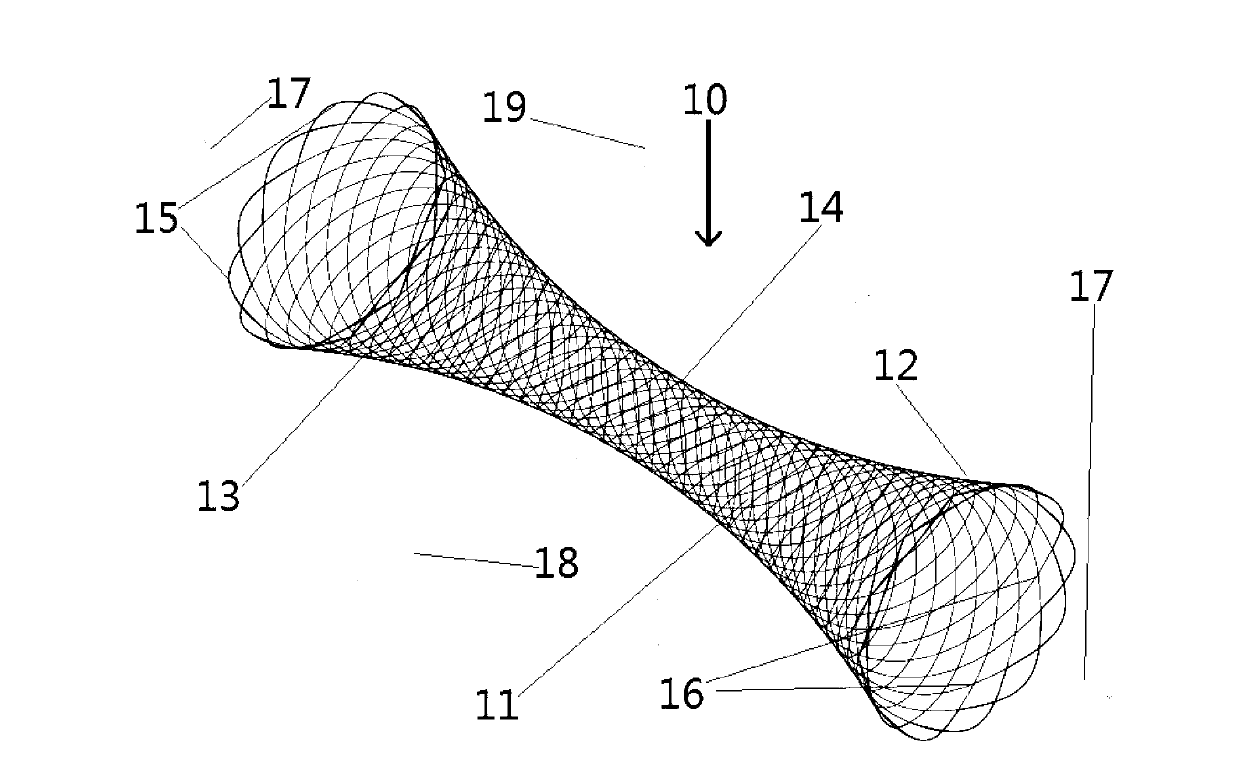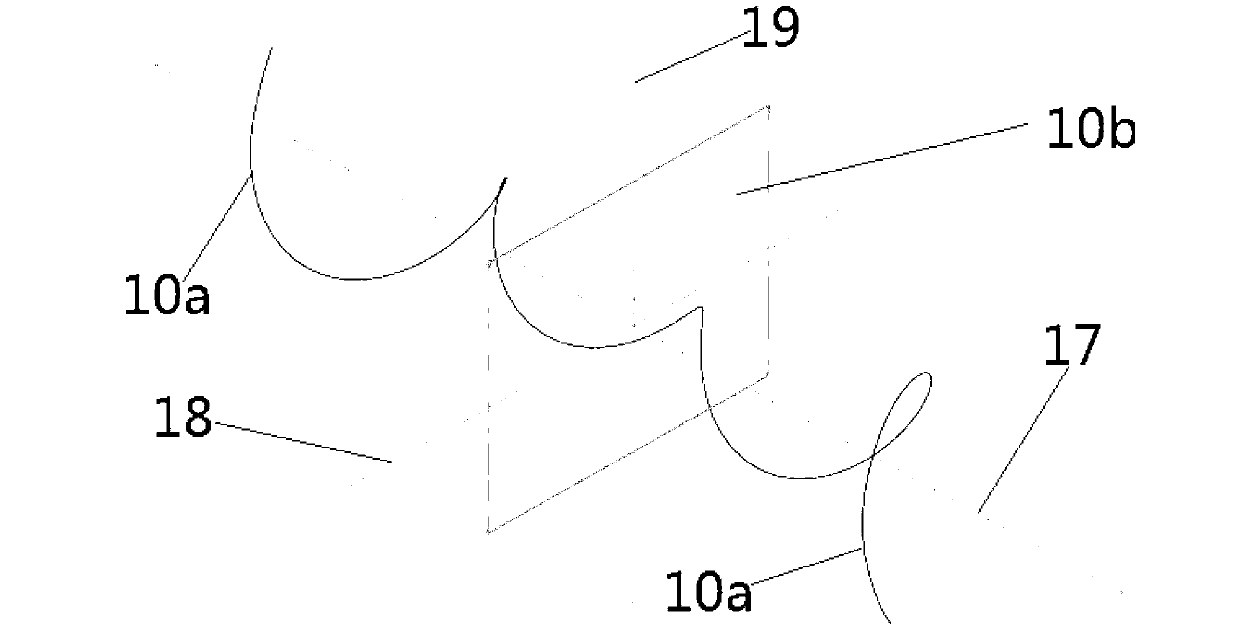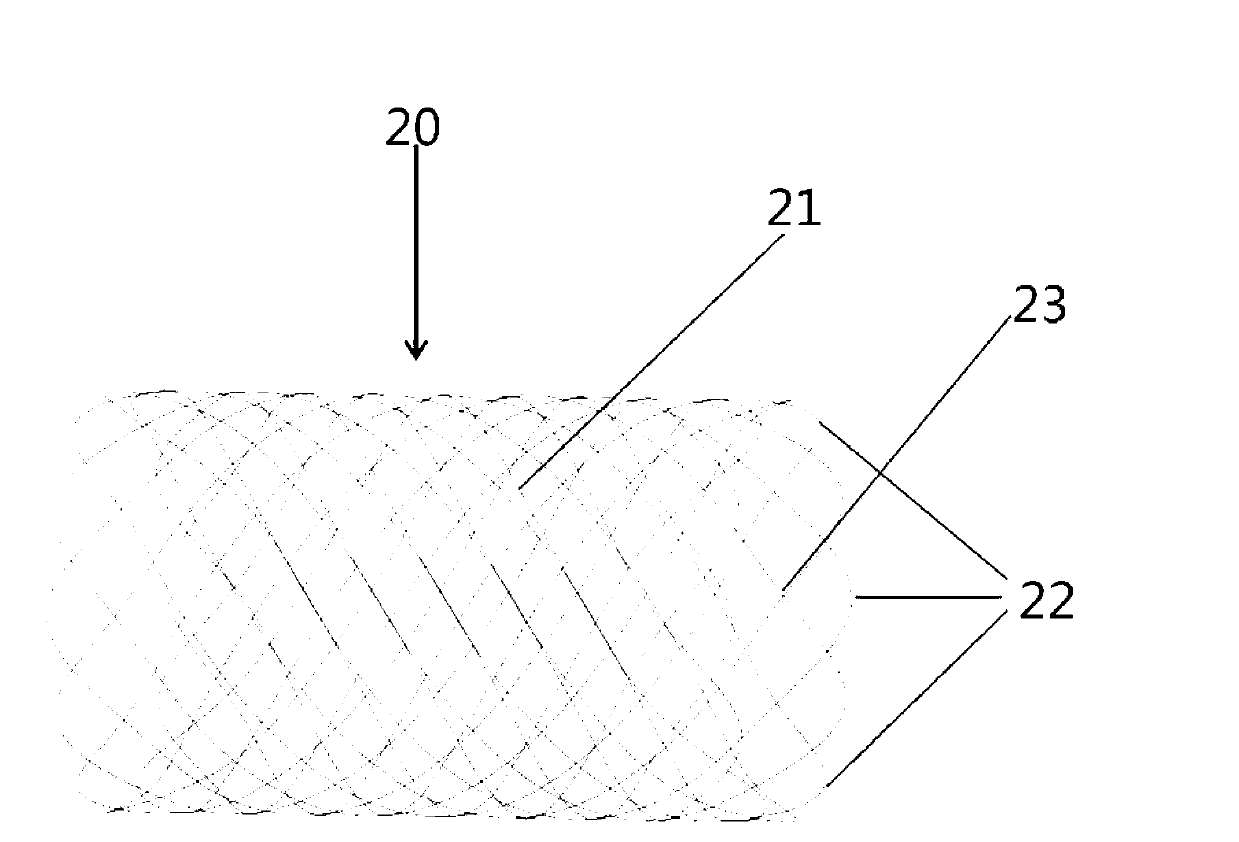Prosthetic system for treating nasosinusitis or allergic rhinitis
A technology for allergic rhinitis and sinusitis, applied in the field of medical devices, can solve problems such as channel blockage
- Summary
- Abstract
- Description
- Claims
- Application Information
AI Technical Summary
Problems solved by technology
Method used
Image
Examples
Embodiment 1
[0051] like Figure 1A and 1B As shown, the prosthesis system for treating sinusitis or allergic rhinitis according to a preferred embodiment of the present invention is a prosthesis 10 braided from a monofilament made of a degradable polymer. The prosthesis 10 has a circumferentially extending wall 11 which is closed in the circumferential direction, ie a circumferentially closed cavity is bounded by the wall 11 , the cavity is open at both ends. The wall surface 11 is braided by monofilaments, and there are predetermined gaps between the monofilaments. Therefore, the wall surface 11 has certain elasticity and can be moderately compressed and expanded.
[0052] The monofilament consumption of the prosthesis 10 can be changed by adjusting the number of bending points 15 of the monofilament at both ends of the prosthesis during weaving, especially for the prosthesis 10 of the same diameter and length. The more the bending vertices 15 are, the more the monofilament consumption ...
Embodiment 2
[0068] like figure 2 As shown, the prosthesis system for treating sinusitis or allergic rhinitis according to another preferred embodiment of the present invention is a tubular prosthesis 20 braided from monofilaments composed of degradable polymers . The prosthesis 20 has a wall surface 21 extending in the circumferential direction, and the wall surface 21 is closed in the circumferential direction, that is, a cavity closed in the circumferential direction is defined by the wall surface 21, and the two ends (two ends) of the cavity are open, that is, the prosthesis The body 20 is formed in a cylindrical structure. The wall surface 21 is braided by monofilaments, and there are predetermined gaps between the monofilaments. Therefore, the wall surface 21 has a certain degree of elasticity, and can be moderately compressed and expanded. Similar to the preceding embodiments, the performance of the prosthesis, such as workability before implantation, implantation Transportabili...
Embodiment 3
[0073] like Figure 3A and 3B As shown, the prosthetic system for treating sinusitis or allergic rhinitis according to yet another preferred embodiment of the present invention is based on a cylindrical base body 30, and a void 32 is formed on the wall 31 of the base body 30 by laser cutting. The prosthesis system also includes a flared head end, the flared head end is formed by braiding axially outwards at both ends of the base body 30 through the gap 32 .
[0074] Figure 3A Shown is a base body 30 of equal diameter laser-cut from a hollow tube, the base body 30 of equal diameter has a wall surface 31 extending in the circumferential direction, and the wall surface 31 is closed in the circumferential direction, that is, a circumferential direction is defined by the wall surface 31 A closed cavity, the two ends of which are open, that is, the basic body 30 of equal diameter is formed into a cylindrical structure. The wall surface 31 is a flat plate structure made of degrad...
PUM
| Property | Measurement | Unit |
|---|---|---|
| diameter | aaaaa | aaaaa |
| diameter | aaaaa | aaaaa |
| diameter | aaaaa | aaaaa |
Abstract
Description
Claims
Application Information
 Login to View More
Login to View More - R&D
- Intellectual Property
- Life Sciences
- Materials
- Tech Scout
- Unparalleled Data Quality
- Higher Quality Content
- 60% Fewer Hallucinations
Browse by: Latest US Patents, China's latest patents, Technical Efficacy Thesaurus, Application Domain, Technology Topic, Popular Technical Reports.
© 2025 PatSnap. All rights reserved.Legal|Privacy policy|Modern Slavery Act Transparency Statement|Sitemap|About US| Contact US: help@patsnap.com



